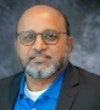Joining the Institute of Electrical and Electronics Engineers (IEEE) Working Group for Distributed Energy Resource Management Systems (DERMS) has been a transformative experience. As a member of this dynamic group, I've had the opportunity to contribute to shaping the future of energy management, participate in cutting-edge discussions and collaborate with experts from diverse backgrounds. In this post, I share insights and reflections on my journey as a member of the working group.
Understanding the landscape: You may know that the energy sector is undergoing a rapid transformation, with an increasing focus on integrating renewable energy sources and enhancing grid resilience. The IEEE Working Group for DERMS plays a pivotal role in this transition by providing a framework for managing distributed energy resources, optimizing grid performance and ensuring the reliable delivery of power. Being part of the working group has allowed me to delve deep into the challenges and opportunities presented by this evolving landscape.
Collaboration with industry leaders: One of the most enriching aspects of my experience has been the chance to collaborate with industry leaders, researchers and professionals who share a passion for advancing DERMS technologies. The working group serves as a platform for open discussions, knowledge sharing and collaborative problem-solving. Engaging with experts from different sectors has broadened my perspective and allowed me to gain valuable insights into various aspects of DERMS development and implementation.
Contributions to standards and best practices: IEEE is renowned for developing standards that shape industries, and the DERMS working group is no exception. As a member, I have actively participated in the creation and refinement of DERMS standards and best practices. Contributing to these standards not only adds to my professional achievements but also instills a sense of responsibility as we work toward creating a cohesive and interoperable DERMS ecosystem.
Keeping pace with technological advancements: The energy sector is evolving at a rapid pace, with technological advancements influencing the DERMS landscape. Being part of the working group ensures that I’m at the forefront of these developments. From discussions on the integration of artificial intelligence and machine learning in DERMS to exploring the potential of blockchain in energy management, the working group provides a platform to stay informed and contribute to shaping the technological future of DERMS.
The impact of IEEE Working Group for DERMS: As a member, I’m proud to be part of a community that is actively contributing to the advancement of DERMS technologies. Our collective efforts not only shape industry standards but also influence the broader energy landscape. The working group’s efforts have a tangible impact on the deployment of DERMS solutions globally, contributing to a more sustainable and resilient energy future.
Being a member of the working group has been a rewarding and intellectually stimulating journey. It has provided me with opportunities to collaborate, contribute to industry standards and stay at the forefront of technological advancements. As the energy landscape continues to evolve, I look forward to furthering my contributions to the DERMS domain and being part of the positive changes that will shape the future of energy management.




